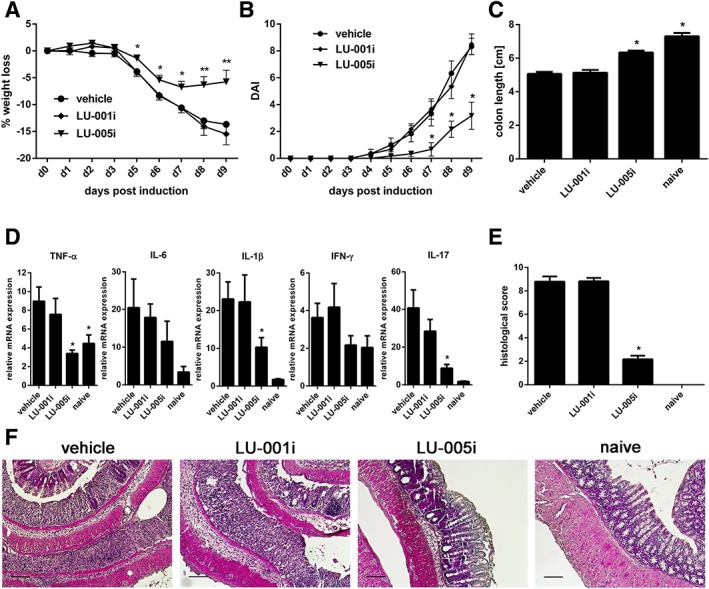Figure 5.

LU‐005i ameliorates DSS‐induced colitis. Colitis was induced by oral administration of 3% DSS for 5 days. Mice were treated daily (s.c.) with LU‐005i (15 mg·kg−1), LU‐001i (15 mg·kg−1), or vehicle as indicated. All data were statistically compared to the vehicle‐treated group. *P < 0.05. (A) Body weight of individual mice was monitored daily: % weight loss (y‐axis) is plotted versus time (x‐axis). Data points represent mean ± SEM of 13 mice. (B) DAI was determined daily. Data points represent mean ± SEM of six mice. (C) On day 9, colon length was analysed. Naïve mice (n = 5) were used as healthy controls. Data points represent mean ± SEM of 13 mice. (D) TNF‐α, IL‐1β, IL‐6, IFN‐γ and IL‐17 mRNA content was analysed by real‐time RT‐PCR in colon on day 9. The values were normalized to the expression of hypoxanthineguanine phosphoribosyl transferase in the same organs, and the relative cytokine expression was calculated, with the value for lowest expression being arbitrarily set to unity. Data points represent mean relative mRNA expression levels ± SEM of six mice or five mice (naïve group). The ‘naive’ group of IL‐1β and IL‐17 was excluded from statistical analysis due to variance inhomogeneity. (E) Semiquantitative histopathological assessment of colitis on day 9. Data points represent mean histopathological score ± SEM of 12 mice or 4 mice (naïve group). The ‘naïve’ group was not statistically analysed due to the low number of mice used. (F) Representative histological colon sections of the indicated groups of mice (H&E, original magnification ×10). Scale bar corresponds to 100 μm.
